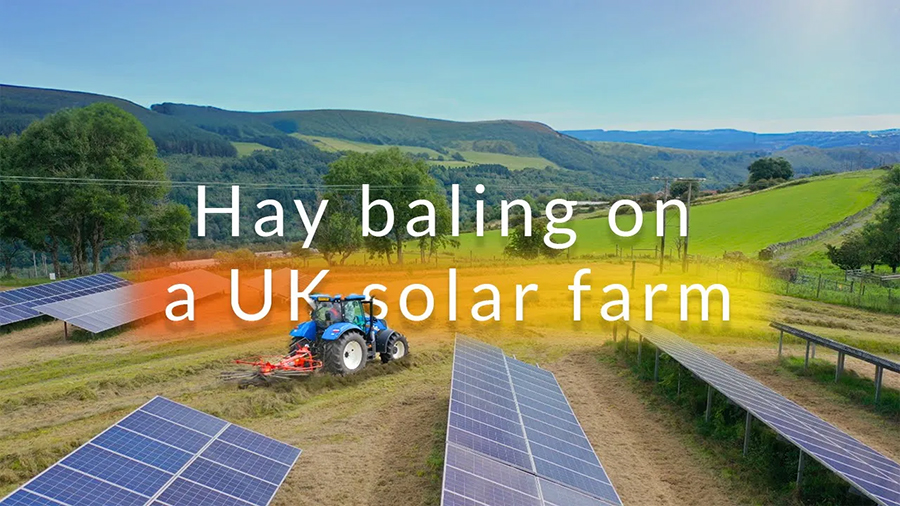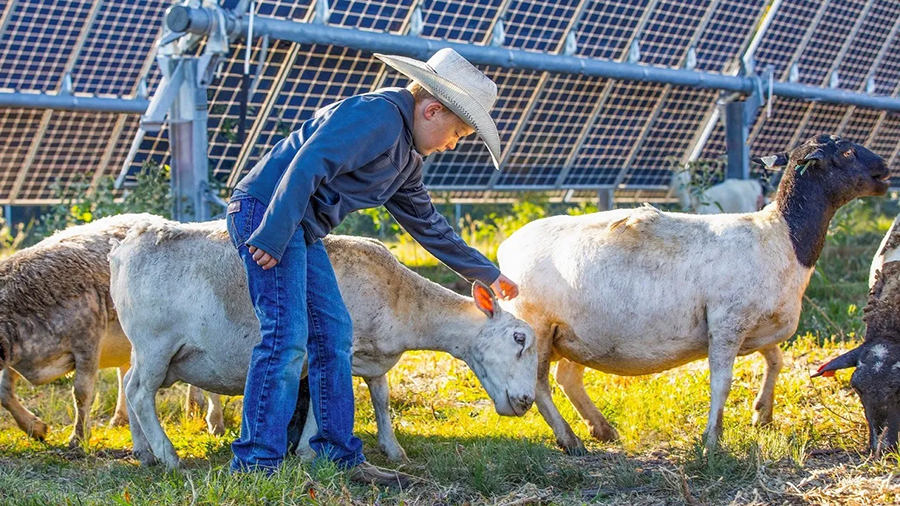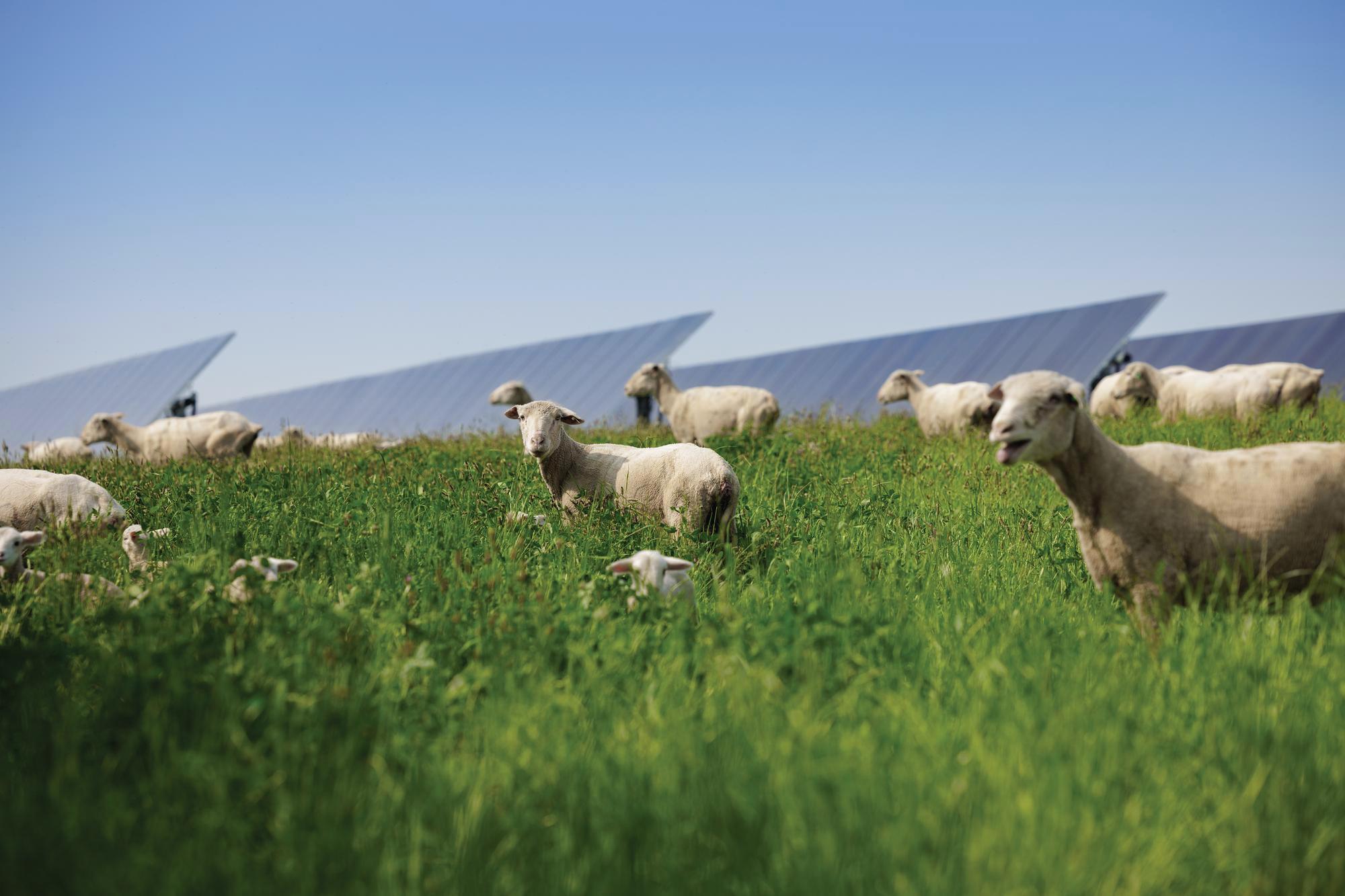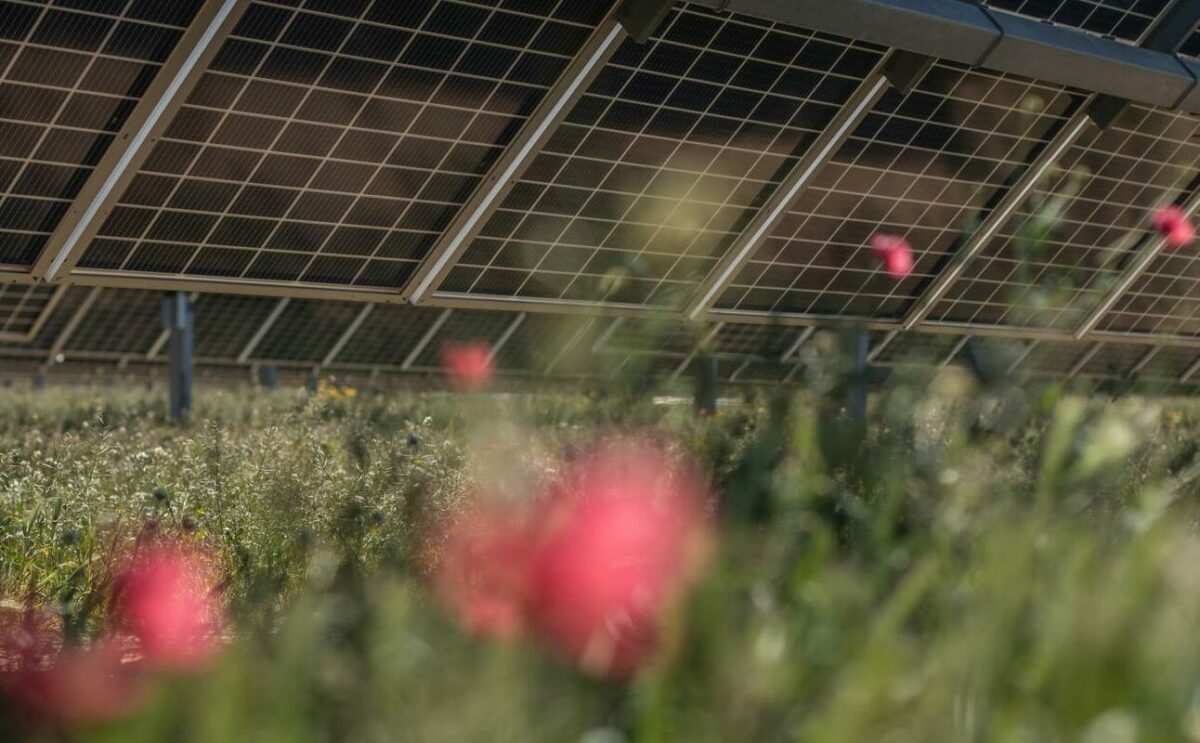Agrivoltaics: What it is, and why it’s key to scaling up solar
Agrivoltaics enables multiple land-use opportunities for solar farms, including food production through growing and cultivation of crops and grazing of livestock.
The agrivoltaics approach has huge potential worldwide. In the EU, for example, research has revealed that agrivoltaics would allow Europe to surpass its target to generate 720GW of solar energy by 2030 using just 1% of current agricultural land. And a recent study suggests it’s the exact same in the US.
As well as helping realise the potential of solar, agrivoltaics brings a whole host of other opportunities, from boosting food security to farmers’ income to soil health. So how does this virtuous circle work, and what can be done to scale it up?
Watch the video below to see how hay baling can be carried out alongside solar farms.

A win-win solution
Today, solar is a mature technology, ready to rise to the challenge of helping to meet Paris Agreement goals. It already offers the cheapest source of electricity in history and has expanded by a record 26% in 2022.
Agrivoltaics provides an opportunity to rapidly expand solar with minimum impacts to agricultural land, which will be key to building the necessary trust and support with all stakeholders. But this isn’t a compromise; agrivoltaics brings additional benefits of its own.
Multiple uses, multiple benefits
At Lightsource bp’s Elm Branch solar farm in Texas, for example, the revenue from agrivoltaics allowed a family to live the dream of farming sheep full time. There, managed grazing has also helped rejuvenate the soil, providing the baseline for healthy insect and bird populations, while controlling the vegetation around the panels in a natural, effective way.
Ultimately, a farmer’s biggest concern is the productivity of their land. Research from the US has suggested that agrivoltaics can significantly boost crop growth by allowing the soil below panels to retain more water. And the shade the panels provide improves the wellbeing of livestock.

While the future offers many opportunities for collaborative new combinations of solar technology and agriculture, there are also many opportunities available right now. From grazing and hay-baling to honey production and aquaculture, Lightsource bp is developing projects where power grids and farmers can reap the harvest of early cooperation.
Find out more about these and our other environmental stewardship initiatives.
Latest news
01 Sep, 2025
Beyond renewable energy: Lightsource bp’s commitment to biodiversity and farming
The renewable energy sector, particularly solar energy, is playing a critical role in addressing biodiversity loss and improving ecosystems.
30 Jun, 2025
SolarPower Europe launches Global Market Outlook for Solar Power 2025-2029
Read our summary of SolarPower Europe’s Global Market Outlook for Solar Power 2025-2029.
29 May, 2025
Lightsource bp publishes 2024 Sustainability Report
Lightsource bp, a global trusted partner in delivering onshore renewable energy solutions, is pleased to publish its 2024 Sustainability Report.




